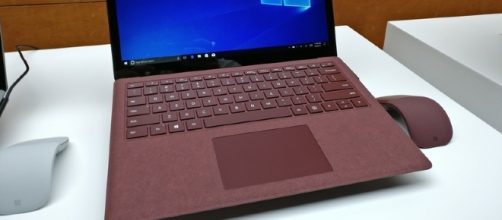As anyone following general tech news knows, a few days ago Microsoft presented a more educationally-geared offering of new hardware and software in the form of the new Surface laptop and the Windows 10 S operating system.
The Surface (with the W 10 S) has turned quite a few heads with its simplified operation and a basic selection of apps – perfect for use at school by teachers and educators.
The package also raised some eyebrows at certain features of the Surface laptop, such as having the keyboard area be lined with Alcantara fabric. More tech-savvy observers, on the other hand, have noticed something amidst along the sides of the thing: there are no USB-C plugs.
Why hasn’t Microsoft used them here?
Standards fall short
Ever since its initial introduction in 2014, the USB-C connector system has begun to take its place in some of the latest models of many an electronic device for data and energy transfer. One of the major brands to capitalize on USB-C for their hardware is Apple, on their more recent MacBook series Even Microsoft has dabbled with the connection on their Lumia 950 smartphone. So why then has it not been adopted into their other devices?
Pete Kyriacou, Microsoft’s general manager for Surface Engineering, has a rather audacious explanation as to the aloofness towards USB-C: the connector type is not good enough for Microsoft. “It’s not like we haven’t known about USB-C for a long time,” he explains.
However, the Surface already has its own Connect port that thus far has been proven reliable enough for both power and docking connection needs.
His emphasis on reliability is founded on sound complaints about the USB-C port connections. Despite its arguably superior performance in transference, the quality of connectors in that format has proven to be a pain of sorts to many users.
MacBook users may have appreciated being able to use a common charger for multiple USB-C equipped devices, but the hubs that use it are often of questionable quality.
Sticking to what always works
It was that common problem with USB-C users that convinced Microsoft to continue using their Surface Connect adapter. It was introduced in 2014, just like the USB-C.
Kyriacou feels that retaining what “confidently” works with their hardware is more reliable and less confounding.
The current setup for the Surface has four non-C USB ports, gigabit Ethernet connection, power cable and two external display ports, a consistency that Surface users welcome.
Ultimately, Microsoft’s decision not to put a USB-C port on their Surface laptop all came down to, according to Kyriacou, design, and space. He thinks it will still be a while more, in spite of Apple, for USB-C to become “mainstream.”


